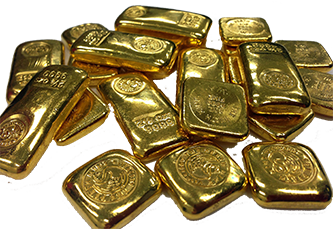

/cloudfront-us-east-2.images.arcpublishing.com/reuters/TDWIJMFE6NIBPJ5WVSR376MJP4.jpg)
Amidst warnings of a looming U.S. recession and surging unemployment, the Federal Reserve’s aggressive monetary policy has seemingly achieved an unexpected economic outcome.
Economists have dubbed this peculiar phenomenon “immaculate disinflation,” as inflation rates decline while economic growth remains intact.
However, skepticism looms as this unconventional turn of events challenges decades of economic history and leaves Federal Reserve Chair Jerome Powell and colleagues grappling with their next move to control prices.
Unraveling the Mystery:
Despite expectations that steep increases in U.S. interest rates would precipitate a recession and job losses, the economy has defied these projections.
With the Fed funds rate at a 17-year high, unemployment levels are on par with pre-pandemic figures, while GDP maintains a healthy annual growth rate of 2%.
Yet, the claim is that inflation is dropping, with consumer prices only rising by 3% year-on-year in June.
Plausible Explanations:
Economists are puzzled by this unanticipated resilience, offering two potential explanations.
Firstly, some argue that despite the rate hikes and money withdrawal, monetary policy remains relatively loose.
After adjusting for inflation, the Fed funds rate is currently around 0.5%, indicating it may not wield a strong enough downward influence on economic activity.
The second theory suggests that the economy’s robustness owes much to healthy household and corporate balance sheets.
The substantial fiscal stimulus from former president Donald Trump and his successor Joe Biden played a significant role.
Relief checks, bolstered unemployment aid, and increased consumer spending and business investment have fostered financial stability.
For instance, households are dedicating just 9% of disposable income to debt servicing, a near-40-year low.
The Enigma of Falling Inflation:
Conventionally, a strong economy exerts upward pressure on prices, yet U.S. consumer price inflation has been steadily decreasing, approaching the Federal Reserve’s 2% target.
Experts grapple to explain this peculiar convergence of factors.
The Pandemic Effect and Employment:
One theory points to the pandemic disrupting the usual economic cycle.
Instead of a typical boom-and-bust pattern, the U.S. experienced intermittent inflation bursts driven by increased demand for goods and services during various phases of the pandemic.
As the economy normalized, inflation gradually declined.
Another possible reason for the unconventional economic response is that the link between higher interest rates and job losses has weakened.
Companies may be retaining labor in anticipation of future upturns, thereby preventing widespread layoffs.
Uncertain Times for Fed Policymakers:
While believers in “immaculate disinflation” view it as a sign of economic strength, skeptics caution against complacency. The full impact of tighter monetary policy is yet to be felt, and further tightening by the central bank might eventually strain the labor market and economy.
The Unholy Dilemma:
Powell’s comparisons to the 1980s inflation outbreak, which necessitated interest rates close to 20%, reveal the Fed’s cautious approach to preemptively tackle inflation.
However, there’s no guarantee that inflationary forces are fully waning, and unexpected wage demands could trigger a new cycle of rising wages and reactive price hikes.
Awaiting the Future:
The latest hiring data suggests room for further rate hikes, but economists have repeatedly misjudged the employment outlook over the past year.
As the Federal Reserve grapples with this unprecedented economic puzzle, the choice between historical lessons and recent developments remains uncertain until disinflation becomes less enigmatic.
Read the original story here:
Reuters


